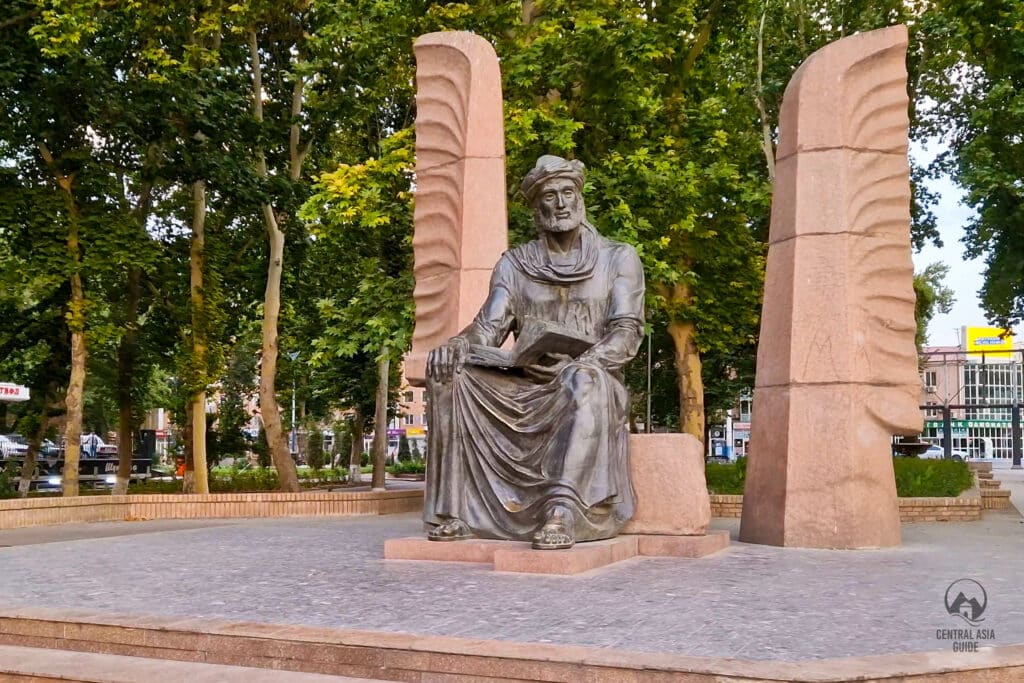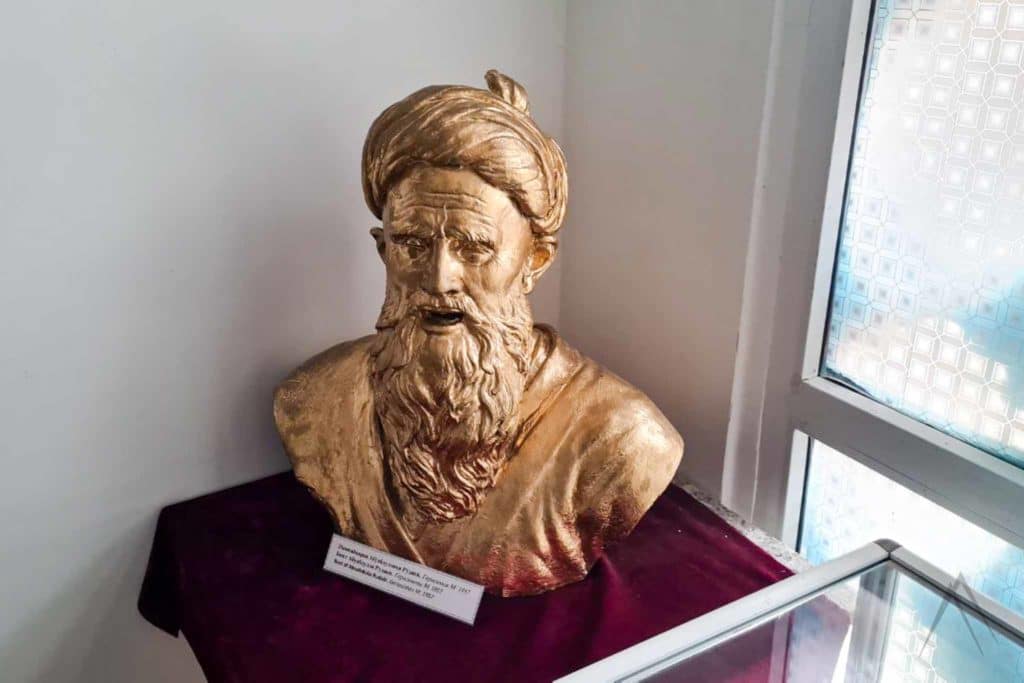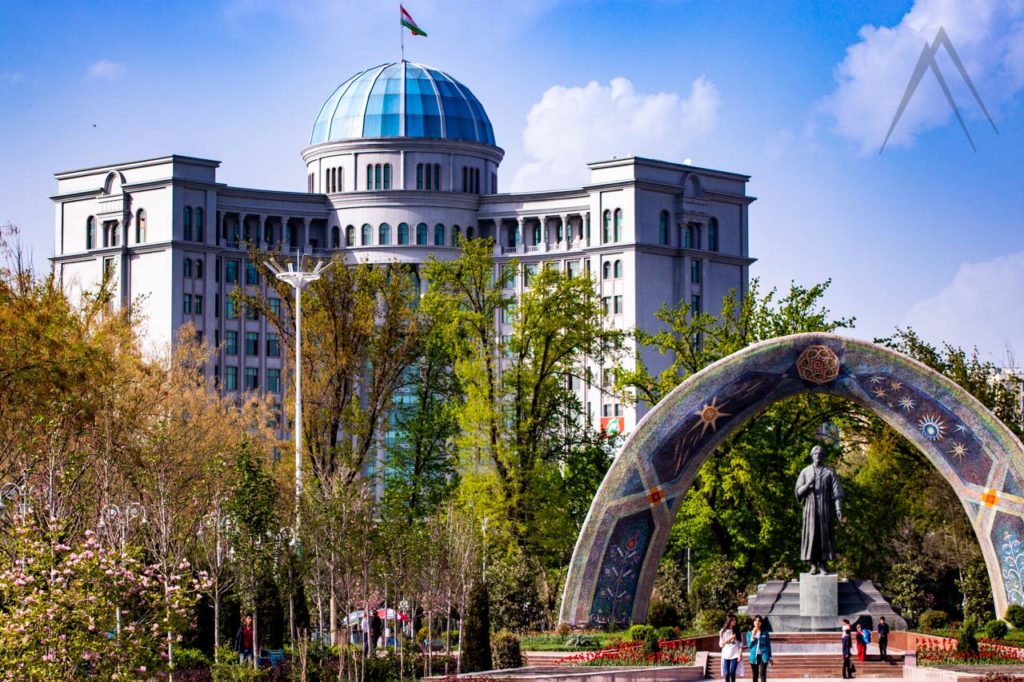Rudaki
Rudaki
- The father of Tajik-Persian poetry
Rudaki was a multifaceted figure—poet, singer, and a pioneer in Persian literature. Born as Abu Abd Allah Ja’far ibn Muhammad ibn Hakim ibn Abd al-Rahman ibn Adam al-Rudhaki al-Sha’ir al-Samarqandi (C. 858 – 941) , he emerged as one of the earliest Persian poets to compose verses in the Neo-Persian language. Revered as the “father of Persian poetry,” Rudaki played a foundational role in shaping literature in this language. His impact extended to being recognized as the “founder of New Persian poetry” in Iran and is also often referred to as the “father of Tajik literature” in Tajikistan.
Possessing proficiency in the Arabic language and a captivating voice, Rudaki was not only a poet but also a skilled lute player with a natural inclination for poetic composition. For over four decades, Rudaki led an influential poetic circle at the court of the Samanids in Bukhara, alongside celebrated poets like Abu Shukur Balkhi, Husrawani, Dakiki, and Hakim Habib Nishapuri, amassing significant fame and wealth.
Biography of Rudaki
Abu Abdullah Jafar Rudaki’s birth is placed in the mid-9th century (around 860) in the village of Panj Rud, near Panjakent. Details about Rudaki’s life and family background are scarce, leaving the social class of his family unknown. However, one verse suggests humble origins and personal hardships.
Rudaki’s early years were marked by remarkable achievements, having memorized the Qur’an and displayed poetic talent by the age of eight. He received musical guidance from a prominent musician named Abu’l-Abak Bakhtiar. Rudaki gained popularity for his fine voice, poetry, and musical abilities. Departing from his native village, he made his way to Samarkand, the primary city near the Zarafshan Valley at the time and the second center for political, economic, scientific, and literary activities in the Samanid state of the 10th century. The precise time when Rudaki was invited to the court of the Samanids is uncertain, but Nasr II ibn Ahmad Samanid, who ruled from 913 to 943, extended the invitation, and Rudaki spent a significant portion of his life there.


Rudaki enjoyed favor at the court of Emir Nasr II, leading a group of poets for several decades and accumulating wealth and fame. As a prolific author, Rudaki is considered the founder of Persian literature, recognized as the precursor of poetry in Farsi. His early acclaim came as a singer, musician-rhapsodist, and poet. Possessing a good scholastic education, Rudaki was well-versed in the Arabic language and the Quran.
In his later years, Rudaki faced adversity as he was blinded and expelled from the palace. The exact details of these events are uncertain, with one version suggesting the emir’s punishment for Rudaki’s sympathy toward the rebellious Qarmatians, and another version proposing that the poet was tortured and blinded by the rebels themselves due to their shared zealous Ismaili beliefs.
Regardless, challenging times arrived, and Rudaki was compelled to leave the palace. He spent his remaining years impoverished and ill in his native Panj Rud, where he passed away in 941.
Works of Rudaki
Rudaki’s extant works amount to just over 2000 lines, showcasing his mastery across various poetic genres of the era. His repertoire includes identical odes (qasidas), lyrical ghazals, extensive didactic poems (featuring well-known fables from the “Kalila wa-Dimna” cycle and others), satirical verses, and mournful dedications. Notable are the completely preserved qasidas “Mother of Wine” (933) and the autobiographical qasida “Complaint of Old Age” along with around 40 quatrains (rubaiyat). The rest exist as fragments from panegyric, lyrical, and philosophical-didactic works, including excerpts from the poem “Kalila wa-Dimna” (Arabic translation, 932), and five other poems. “Kalila wa-Dimna” is Rudaki’s best-known work is his versification, a collection of Indian fables.
Rudaki’s verses resonate with themes of praise and anacreontic elements, coupled with a belief in the power of human reason, a call to knowledge, virtue, and active influence on life. The simplicity of poetic devices, accessibility, and vivid imagery characterize the Khorasan style created by Rudaki and his contemporaries, enduring until the end of the 12th century.
Rudaki was not a typical courtly panegyrist. His odes often commence with vibrant descriptions of nature, celebrating the joys of life and love, reason and knowledge, nobility and life’s challenges. He favored practical life, considering it the best teacher, and religious motifs are largely absent from his verses. Many poems reflect profound philosophical contemplation.


Legacy of Rudaki
In 1958, Iran and the Tajik Soviet Socialist Republic commemorated the 1100th anniversary of Rudaki’s birth with a joint conference, attended by eminent Iranian and Tajik scholars. This period also saw the discovery of Rudaki’s burial site in Panj Rud. Soviet archaeologist and anthropologist Mikhail Mikhaylovich Gerasimov excavated and analyzed Rudaki’s remains, using them to create a sculptural representation of the poet’s face which is now displayed in the Rudaki museum near Panjakent nearby his mausoleum. Following the dissolution of the Soviet Union, Rudaki became a prominent symbol of Tajik identity, strengthening ties with the broader Persian-speaking world.
Numerous districts, avenues, streets, and settlements in Tajikistan bear Rudaki’s name. In Dushanbe, the main park of the city “Bogi Rudaki” (Gardens of Rudaki) are located next to the city’s main street, the Rudaki street. Regular publications of books and works on Rudaki’s legacy are also produced each year and September 22nd is celebrated as the Rudaki Day.

More about Tajikistan
Page updated 3.2.2024